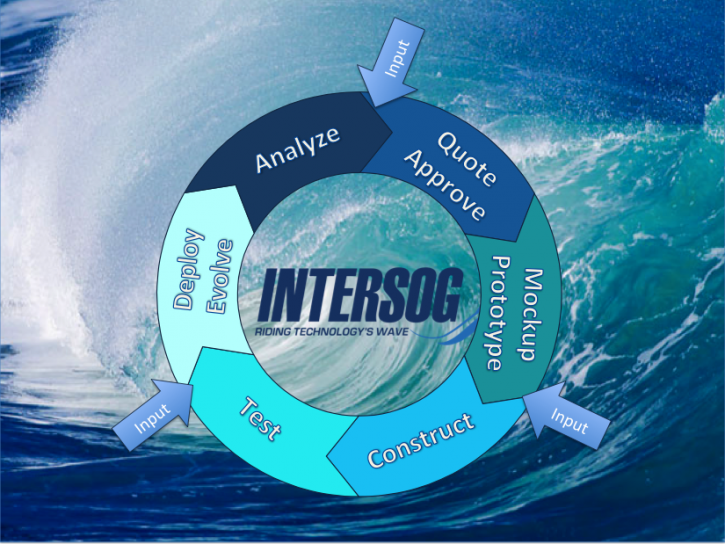Getting products to market can be the difference between being a leader or a follower. Pressing industry drivers have warranted “expedite” strategies in designing, developing and deploying new application products to stay ahead of the curve and win the race. Innovation and evolution will be leading the charge, and the quick to market “minimum viable product” (MVP) with rapid iterations will be paramount to success.

Enter the MOBILE RAD (Rapid Application Development) movement and a revamped Agile methodology. So what are the essential ingredients to accelerate an industry-leading recipe? The following outline should spark a think-tank to revise your development approach.
Experience
Work with experienced individuals to ensure product quality. Don’t attempt rapid product development with junior to mid-level resources. You are likely to do a lot of churning and burning without something stellar to show for it. In Mobile RAD, strong experience is a MUST!
Business Goals
Start with something positively impactful to the business that stems from stated goals and the current state of your market and industry. Workshop and whiteboard the possibilities until you’ve drilled down into the functions of the app, the target devices, the tech stack and external landscape considerations.
App Factors
Consider internal and external facets when defining the app requirements.
• What are your competitors doing?
• How quickly can we get this out?
• Who is the best target group to help refine the MVP?
• What are our risks in producing this or not producing this solution?
User Stories
Get all your user stories documented and mark the essential ones for the MVP. Taking the time to consider all the permeations of how the users may want to utilize the app (as defined by you to accomplish specific business goals) will help you identify which qualify as MVP essentials and which ones can be saved for the app evolution phases. Additional user stories should be collected over time. They don’t necessarily have to be part of the original vision.
Architect
Design your application architecture to accommodate multiple target devices with a centralized code base. Factor in MDM and ITIL (or other compliance) requirements to meet corporate standards. Nothing bodes well when it’s built in a vacuum, so keep “da man” in mind and comply with all security and standards guidelines.
Design
Create an initial design as a wireframe that encapsulates the navigation, data elements workflow and screen breakdown of the MVP. Use an experienced UI/UX person to assist with creating a design that is intuitive and as low maintenance for the user as possible. Perhaps your MVP will only contain 20% of the full vision functionality, but that 20% accommodates 80% of your user base, so the MVP will have value upon impact.
MVP Construction
Once your MVP has been defined, begin your agile iterations with speed in mind. Create an MVP that creates much needed functionality that no one else has. Develop the functionality in chunks so that a re-usable component library can stem from one project to assist another.
Integration
While working on the MVP, get cranking on the API and integration requirements. Document your data requirements, access considerations and what is the shortest road to reach the end of the line with the requirements. Carefully map out what steps are necessary (compliance, security, user authentication, database queries, etc.) to complete the integration requirements and stay focused on each variable of your task list until it is marked off as complete
Not only do you want to define your apps data elements, but you also want to consider what user data can be collected thru the use of the app. An in-depth mobility analytics strategy is recommended.
Input
Share your concept with your target user community, get input for post-initial analysis to verify and validate the chosen MVP functionality. Get your prototype in the hands of the users and solicit feedback. Better to adjust the requirements than to miss the mark of a key user scenario. When testing pre-deployment, solicit user feedback again. There is no better feedback than that you are trying to serve, so don’t shy away from user feedback but encourage it and take the time in this expeditious development cycle to get their input, truly listen and incorporate their feedback to your project. This will ensure you are meeting user requirements and building something they definitely need.

Test Early and Often
Getting the test cycles revved up and working within the first few development iterations will add grease to the skids and keep the product moving forward with each sprint. Don’t wait until you have a fully functioning, integrated product to test. Knocking out performance and functionality issues as early as possible will benefit the overall product quality.
Burndown Chart
Keep this updated to know how well you are staying on target of your deliverables and deadlines. If something has moved the project off course, analyze the tradeoffs of finishing with the functionality or removing to improve the time to market. If time to market is more important than the functionality for the MVP, removing it could be the best move.
Launch/Deploy/Publish
Start with a soft launch of a small group of your target users and get tangible feedback that confirms you have hit the target in the center or you need a few tweaks to be ready to hit the market.
App Store Submission
Register for your Apple iTunes account well ahead of the release schedule. There can be delays in getting your account set up. Google Play is typically much faster to register and publish your offerings. Keep in mind that iTunes approval can take two weeks or more for approval. They can also come back with adjustments they want you to make or reject it completely. If you have any doubt about whether your app would be approved, be sure to review the Apple guidelines thoroughly to understand their criteria.
Evolve
Create a phased release approach with a defined roadmap that incorporates flexibility to accommodate user feedback, ratings and other suggestions. Rigidity is the antithesis of innovation and evolution, so stay nimble and quick and be ready to change directions on the map if need be.
Document
Although the dreaded documentation is often procrastinated, it can really save time, money and aid in producing a better product. Keep your minds open and your documentation fluid, but at some point you have to put a stake in the sand and move forward with solid requirements.
• User stories – requirements
• Project Plan – key milestones, deliverables and deadlines
• Test Plan – test cases and results reports
• Burndown Chart – eye on release date
• Evolution – running list of new features, functions, goals and roadmap
Ask an Expert
As first stated, be sure to run your MOBILE RAD project with experienced individuals. If you don’t have enough expertise on hand, reach out to a mobile app provider like Intersog who has extensive product development and delivery under their belt. Whether you look to augment an existing team or find a partner to build an end-to-end solution for you, picking the ideal mobile app development team will enable your success!






